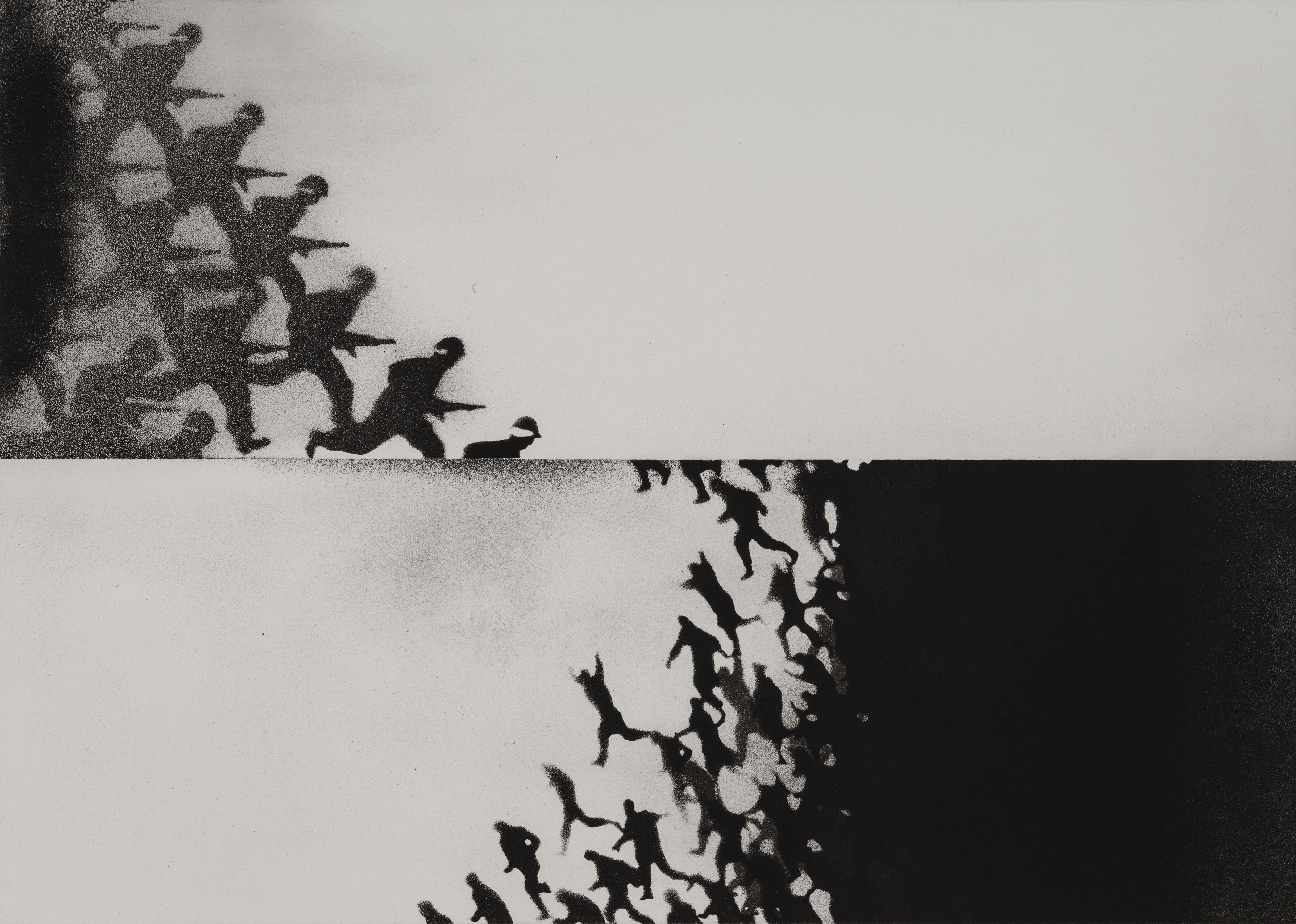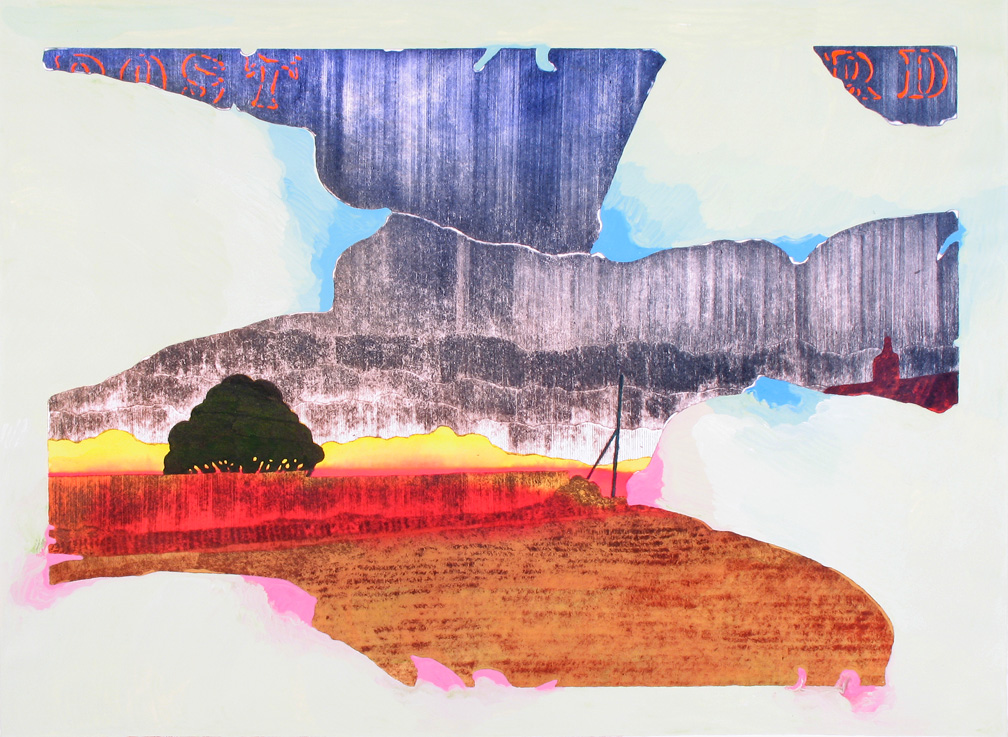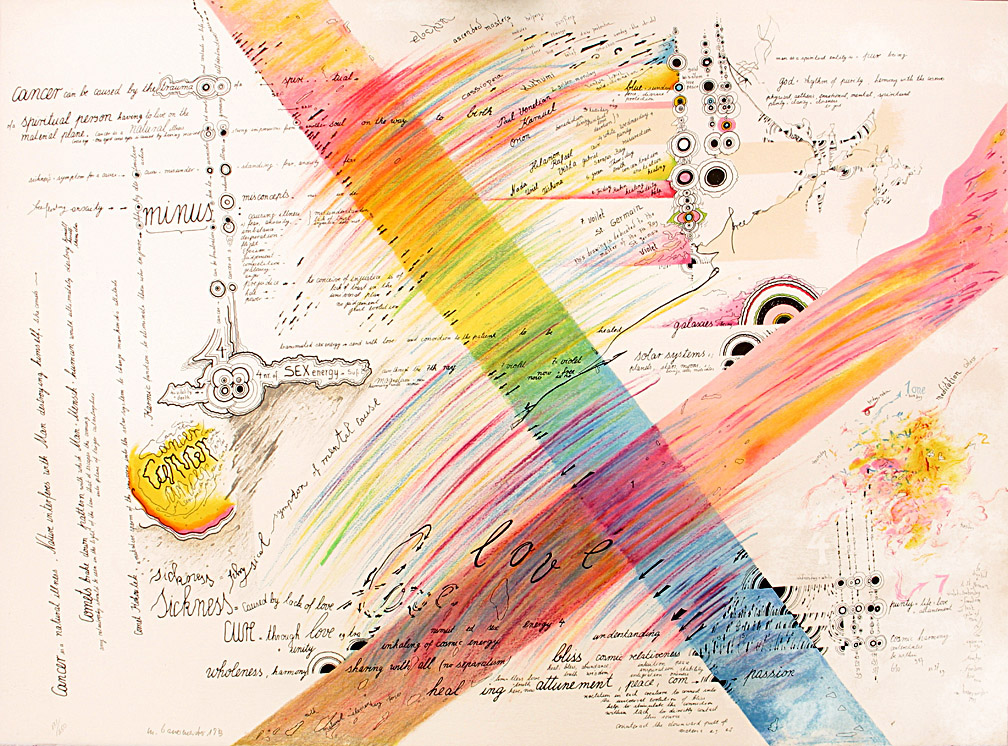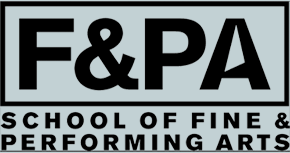For Context: Prints from the Dorsky Collection
Curated by SUNY New Paltz Printmaking Students
September 10 – December 11, 2022
Seminar Room Gallery

Juan Genovés, Untitled, from “El Lugar Y El Tiempo,” 1970, gift of the Martin S. Ackerman Foundation, 1979.015.013c
This exhibition was curated by graduate and undergraduate printmaking students in the School of Fine Arts at SUNY New Paltz. It was conceived as an educational complement to the Benjamin Wigfall & Communications Village exhibition, and a way of providing a broader context, both technical and historical, for viewing the work. In selecting prints to display, the students tried to approach the collection of the Dorsky Museum in a way that Benjamin Wigfall might have. What pieces would he have highlighted, and what artists would he have wanted represented? To continue Wigfall’s mission for more diverse representation in the arts, the prints on view show what contemporary museums could look like as they work toward expanding their collections to be more inclusive.

Jan Sawka, Post Card #35, 1990, gift of Dorsky Gallery Curatorial Programs, 2007.010.022.035
For Context considers printmaking as a fine art medium and clarifies for viewers how prints are produced. The students purposefully selected works that, in their diversity, cover the spectrum of printmaking techniques used by Wigfall and the artists of Communications Village. The exhibition includes Aquatint prints, etchings, lithographs, and screen prints, and their accompanying wall labels contain brief explanations of printmaking techniques in order to demystify the printmaking process and give visitors a clearer grasp of the technical vocabulary. The students were also intent on selecting prints that span the range of styles from representational to abstract, from traditional to experimental, from monochrome to colorful, in ways that reflect the vast diversity of Benjamin Wigfall’s own work.
Another consideration in selecting work was to provide historical context for the use of printmaking as a political medium. Historically, printmaking has always been engaged with community outreach, whether through direct education or through the spreading of political ideas. When looking at the collection, it was important to choose some works that were representative of this historical application. Within this show there are pieces that reflect printmaking’s use in activism throughout history such as works by Käthe Kollwitz, Juan Genovés, and Leon Golub.

Mary Bauermeister, Rainbow, 1973, 1980.010.001
Viewers are invited to revisit the Benjamin Wigfall exhibition after studying the works in For Context in the hope they will have gained a greater appreciation for Wigfall’s technical prowess as a printmaker as well as the rich tradition of community engagement furthered by his work with Communications Village.
For Context: Prints from the Dorsky Collection
Curated by SUNY New Paltz Printmaking Students
September 10 – December 11, 2022
Seminar Room Gallery

Juan Genovés, Untitled, from “El Lugar Y El Tiempo,” 1970, gift of the Martin S. Ackerman Foundation, 1979.015.013c
This exhibition was curated by graduate and undergraduate printmaking students in the School of Fine Arts at SUNY New Paltz. It was conceived as an educational complement to the Benjamin Wigfall & Communications Village exhibition, and a way of providing a broader context, both technical and historical, for viewing the work. In selecting prints to display, the students tried to approach the collection of the Dorsky Museum in a way that Benjamin Wigfall might have. What pieces would he have highlighted, and what artists would he have wanted represented? To continue Wigfall’s mission for more diverse representation in the arts, the prints on view show what contemporary museums could look like as they work toward expanding their collections to be more inclusive.

Jan Sawka, Post Card #35, 1990, gift of Dorsky Gallery Curatorial Programs, 2007.010.022.035
For Context considers printmaking as a fine art medium and clarifies for viewers how prints are produced. The students purposefully selected works that, in their diversity, cover the spectrum of printmaking techniques used by Wigfall and the artists of Communications Village. The exhibition includes Aquatint prints, etchings, lithographs, and screen prints, and their accompanying wall labels contain brief explanations of printmaking techniques in order to demystify the printmaking process and give visitors a clearer grasp of the technical vocabulary. The students were also intent on selecting prints that span the range of styles from representational to abstract, from traditional to experimental, from monochrome to colorful, in ways that reflect the vast diversity of Benjamin Wigfall’s own work.
Another consideration in selecting work was to provide historical context for the use of printmaking as a political medium. Historically, printmaking has always been engaged with community outreach, whether through direct education or through the spreading of political ideas. When looking at the collection, it was important to choose some works that were representative of this historical application. Within this show there are pieces that reflect printmaking’s use in activism throughout history such as works by Käthe Kollwitz, Juan Genovés, and Leon Golub.

Mary Bauermeister, Rainbow, 1973, 1980.010.001
Viewers are invited to revisit the Benjamin Wigfall exhibition after studying the works in For Context in the hope they will have gained a greater appreciation for Wigfall’s technical prowess as a printmaker as well as the rich tradition of community engagement furthered by his work with Communications Village.
SUNY New Paltz 1 Hawk Drive, New Paltz, NY 12561
845.257.3844
For more information contact us at [email protected]

